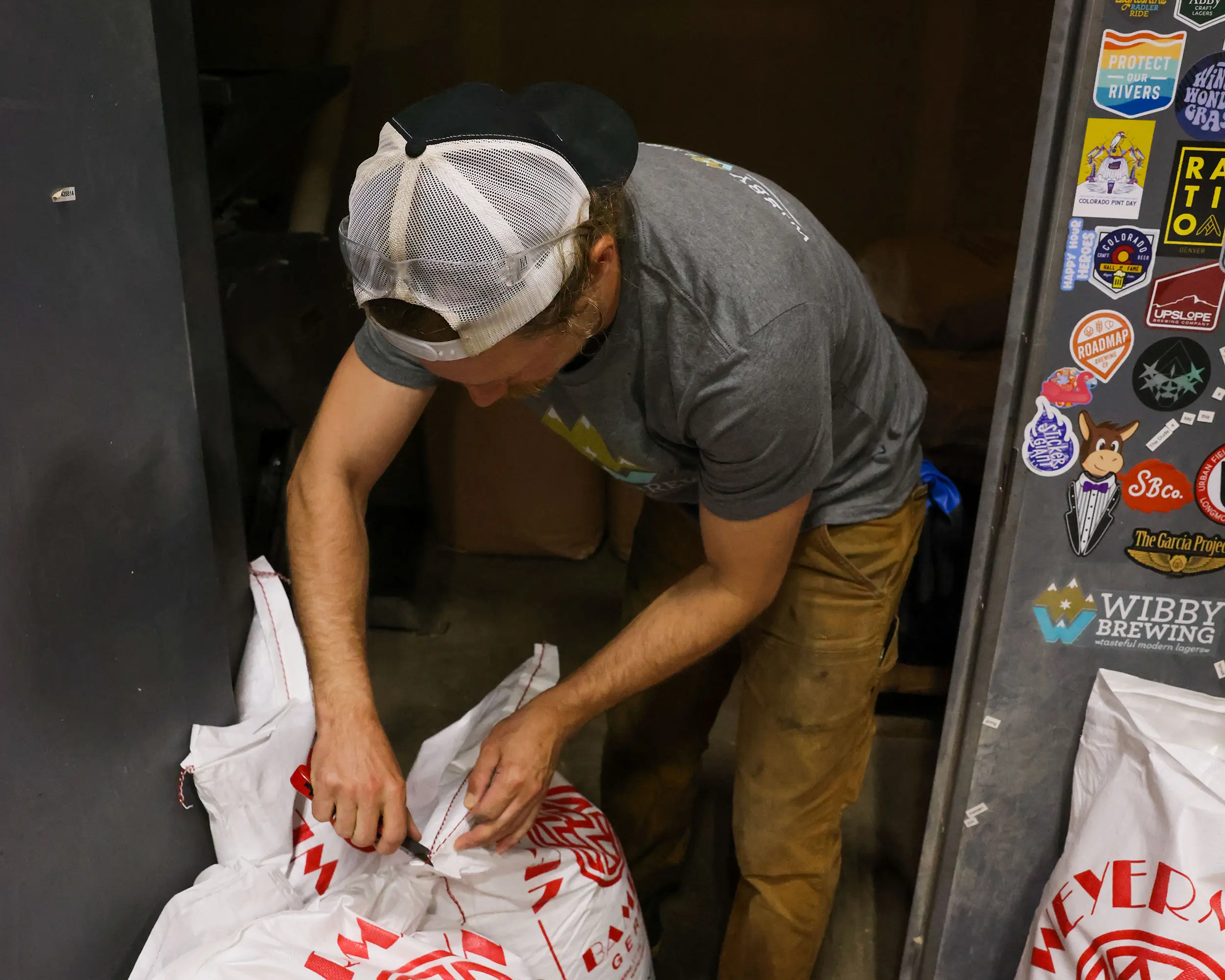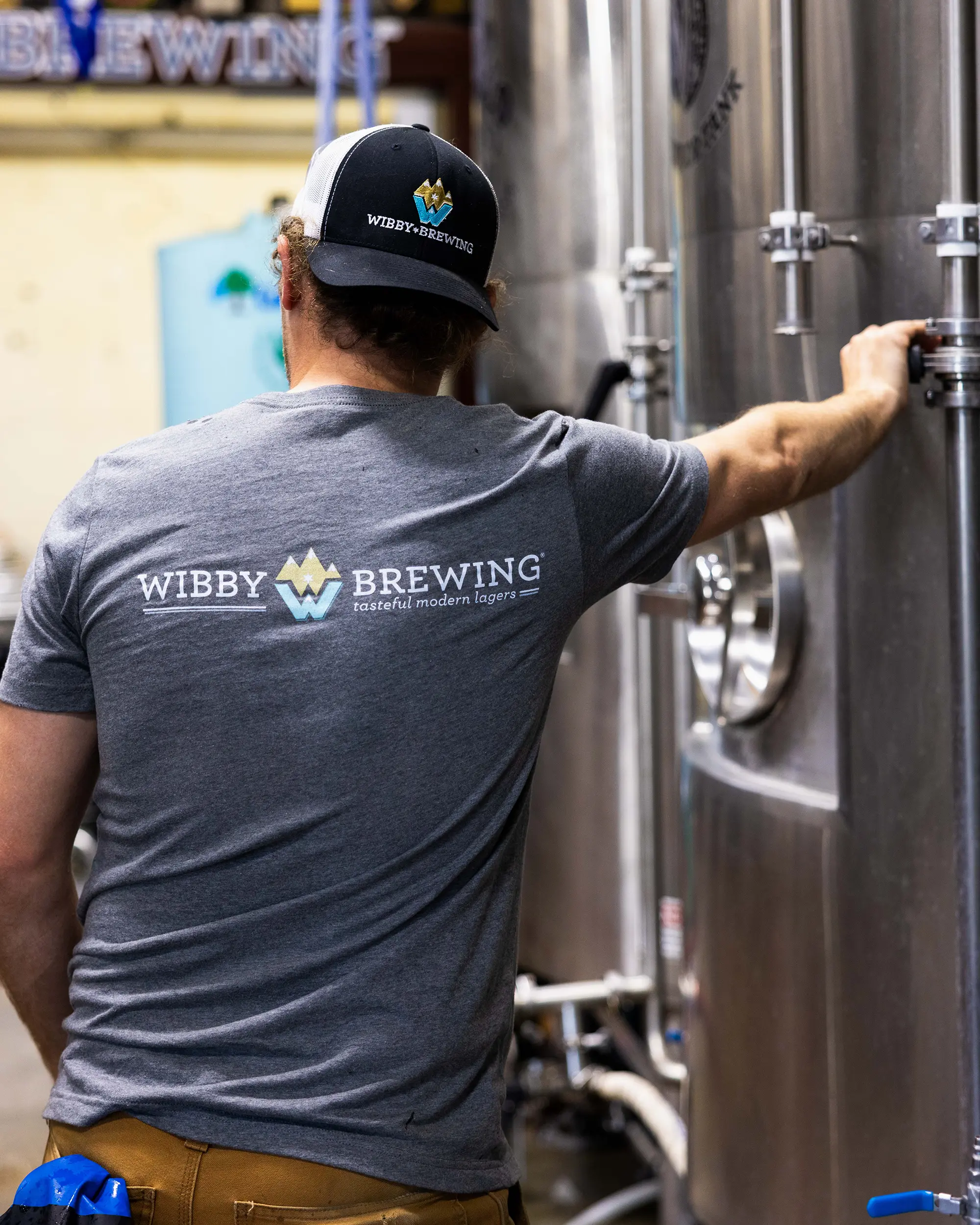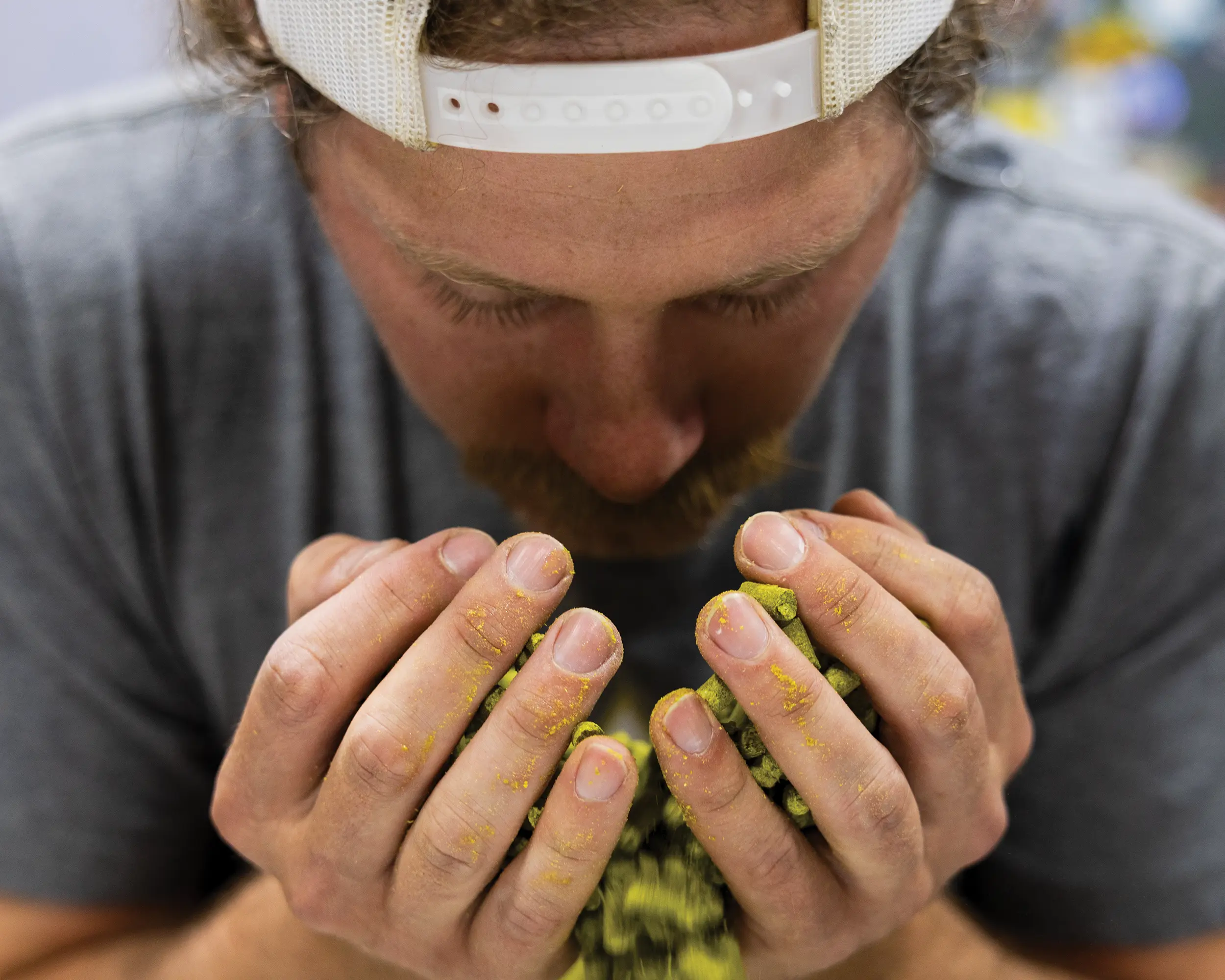Like “salt, fat, acid, heat,” but with a bit more party
Written by Lesli Gegen
Beer has four main ingredients – malt, hops, yeast and water. Sometimes brewers will get playful with the use of adjuncts, including things like fruits, herbs, spices, added sugar and the like, but a beer is not a beer without these primary elements.
With such basic building blocks, the quality of the ingredients has an incredible impact on the finished product. And, while not every brewer will agree on the most important ingredient, they can agree that being choosy about them gives their beers an edge over their competition.
Malt

The first ingredient we’re going to talk about is malt. As one of the most important ingredients in beer, it plays a major role in the overall flavor profile of the finished product, delivering the aroma, color, flavor, mouthfeel, and head retention. Without it, beer would be lifeless and flat.
It’s no surprise then that there are several complexities with malts that can completely change these characteristics in a beer. On the production side, how a malt is dried, kilned or roasted gives the malt a different flavor profile that will be seen in the final product. For instance, if you kiln it at higher temperatures, or for longer, you’ll develop a redder color, and roasting malt will deliver a rich, black color.
Longmont-based Wibby Brewing – whose sole focus is producing lagers using old world brewing techniques – is serious about their malt.
Wibby Brewing uses German malt from Weyermann, who has been producing malt for five generations. “In my opinion, it’s the best malt in the world,” explains Ryan Wibby, co-founder and brewmaster at Wibby Brewing. “With lager beer, malt is the backbone of every beer that we have, so making sure that we have the best is key for creating a great product and being really consistent, which is a big thing for us.”
For Wibby Brewing, malt is the most important ingredient because lager yeast is very delicate. Since these beers take longer to produce, any mistake made in the brewing process will show up in the final product. However, when the right malt and right processes are combined, it creates a perfect environment for the yeast to grow.
Even though Wibby Brewing sources all their malt from Weyermann, that doesn’t mean all of their malt is the same. They use a lot of Pilsner malt, which is the lightest in color; dark Munich, which adds body and a “chewiness” to the beer; and Vienna malt, which also adds chewiness and a little bit of red color. Often, they’ll use all three of these malts in one beer, as is the case in their IPL, and others they may just use two, such as their Volksbier Vienna, which only brings in dark Munich and Vienna malt. “Trying to create a nice balance between these three base malts is what we do as brewers to build the best base for our beer to be made,” explains Wibby.
“I think being transparent about the origins of ingredients gives customers a really cool insight into where brewers are putting their emphasis,” explains Wibby. “For instance, in our case, we’re buying ingredients from halfway across the world. It shows that we value this ingredient highly enough to spend a little bit more money on it.”
Hops

Perhaps the most polarizing ingredient in craft beer is hops, although they’re a crucial part of any beer. Hops are added to beer during the boiling process and contribute bitterness and aroma, and also act as a natural preservative. Often, they’re associated with bitterness, but the reality is that they’re far more complex than being restricted to a singular flavor profile.
For Frisco, Colorado based Outer Range Brewing, hops are their biggest priority. In 2016, Outer Range started out making Belgian beers and Hazy IPAs and quickly gained street cred for the latter, attributing much of their success to the quality of hops they use in their beers. “All of the ingredients are important to us, but one of the things that really sets Outer Range apart is the quality of the hops that we get,” says Wyatt Holwagner, brand manager at Outer Range.
In order to maintain that quality, Outer Range is heading to hop selection in Washington every year to pick their lot and match the profile they want to see in their beers.
Before their production was large enough to go to selection, they were tapping into a hops selection aftermarket that’s very relationship based. Leaning on friends, sourcing what they could, and trading with other breweries who are contracting worked at the time, but the goal has always been to get to contracted hops. And now that they have them, Outer Range has been able to dial up the consistency in their flagship beers.
At selection, they’re looking for a flavor profile that matches their iconic “In The Steep” beer, which Wyatt describes as a “big creamsicle, tangerine flavor, with notes of grapefruit.” A brewer’s nose can get this profile from raw hops, but it takes a certain je ne sais quoi to know that is going to translate through the brewing process. “That’s one of Lee’s strengths,” shares Wyatt, describing Outer Range’s co-founder and head brewer Lee Cleghorn. “He’s really good at seeing how these hops are going to translate over time and work with our beers.”
While they do experiment with different hop variations, the “workhorses of Outer Range” are Citra and Mosaic hops, describes Wyatt.
Yeast

Yeast plays a crucial role in brewing, as it’s responsible for the fermentation. This not only creates the desired alcohol content but also contributes unique flavors and aromas to the beer, shaping its overall character and profile.
California-based Lost Abbey Brewing was founded in 2006 as an homage to Belgian brewing. “It was really just designed to be a no holds bar, flavor first, anything is possible beer,” shared Tomme Arthur, co-founder and director of brewery operations at Lost Abbey.
Of course, with their focus on Belgian beers, yeast IQ is key. Even though they use the most commercially available yeast strains, their time and experience are things that can’t be replicated. “We keep exceptionally detailed notes about our experiences with the yeast that we use,” shared Tomme. Lost Abbey maintains at least three unique suppliers for their yeast needs and tailors their orders according to the performance they need at any given time.
Lost Abbey’s yeast comes from White Labs, also based in San Diego. According to Tomme, it’s helpful for smaller breweries to have such a great partner in a yeast provider, where they can get access to great yeast essentially off the shelf. Many larger breweries maintain their own yeast banks which, when you scale, is super beneficial; however, it’s just not feasible for smaller breweries.
Even though it was founded as a focus on Belgian beers, Lost Abbey has also always been known for their sour beers, which is something Tomme is proud of. “The process of aging beers in oak barrels is not standardized and each brewery gets to reap the rewards of having great house cultures. It’s like we get to maintain our own bio fingerprint,” he shared.
To date, Lost Abbey utilizes old world methods for their sour beers, which means all of their souring is taking place in oak barrels, a method that also demands an intimate knowledge of yeast.
Water
The real unsung hero of the brewing process, however, is good old-fashioned H20. Breweries like Outer Range and Wibby Brewing are fortunate to start their brewing process with a natural advantage in water quality, as they’re brewing with water from the pristine Colorado Rockies.
The water of the Rockies, less mineral-laden than that found in traditional lager brewing regions, requires minimal intervention from Wibby Brewing, who simply employs an activated charcoal filter to remove chlorine added during the water treatment process. Outer Range takes a similarly minimalist approach, stripping water back to a base form before infusing it with salts and calcium along the way.
Conversely, the water in San Diego is abundant in hard minerals, making it less conducive to brewing.
For Lost Abbey, a robust reverse osmosis system serves as the cornerstone of water treatment, resulting in a soft mineral profile. From this base, they can meticulously adjust using salts and minerals to tailor the beer’s taste, whether they aim to craft a crisp lager or a hazy IPA. As Tomme elaborates, “If we want to brew lager beer, we want to have a very soft water profile and would not adjust the water past the reverse osmosis process. However, if we want to make a hazy IPA, we could adjust some of the sulfate in the water, which would change some of the mouthfeel and how the hops interact in the beer.”
Bringing Them All Together
The commitment to quality has yielded remarkable results for all three of these breweries. Wibby Brewing was recently awarded Brewery of the Year at the Great American Beer Festival, Outer Range has been consistently recognized for their hop-forward beers, including Best New Brewery by USA Today in 2017, and Lost Abbey has also garnered dozens of awards, including 2013 Champion Brewery at the San Diego International Beer Festival.
So, while each of these breweries place a different emphasis on each of these elements, when these ingredients come together, they create something pretty special for all of us to enjoy. As Aristotle once said, “the whole is greater than the sum of its parts.” And he was definitely talking about beer, right?
